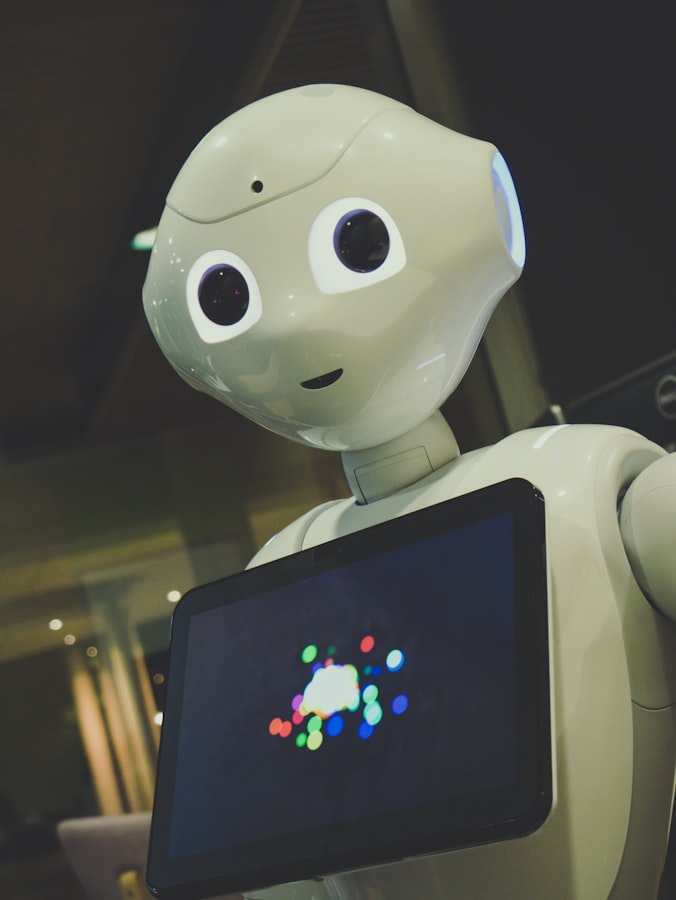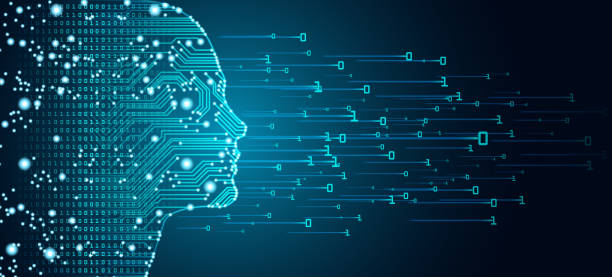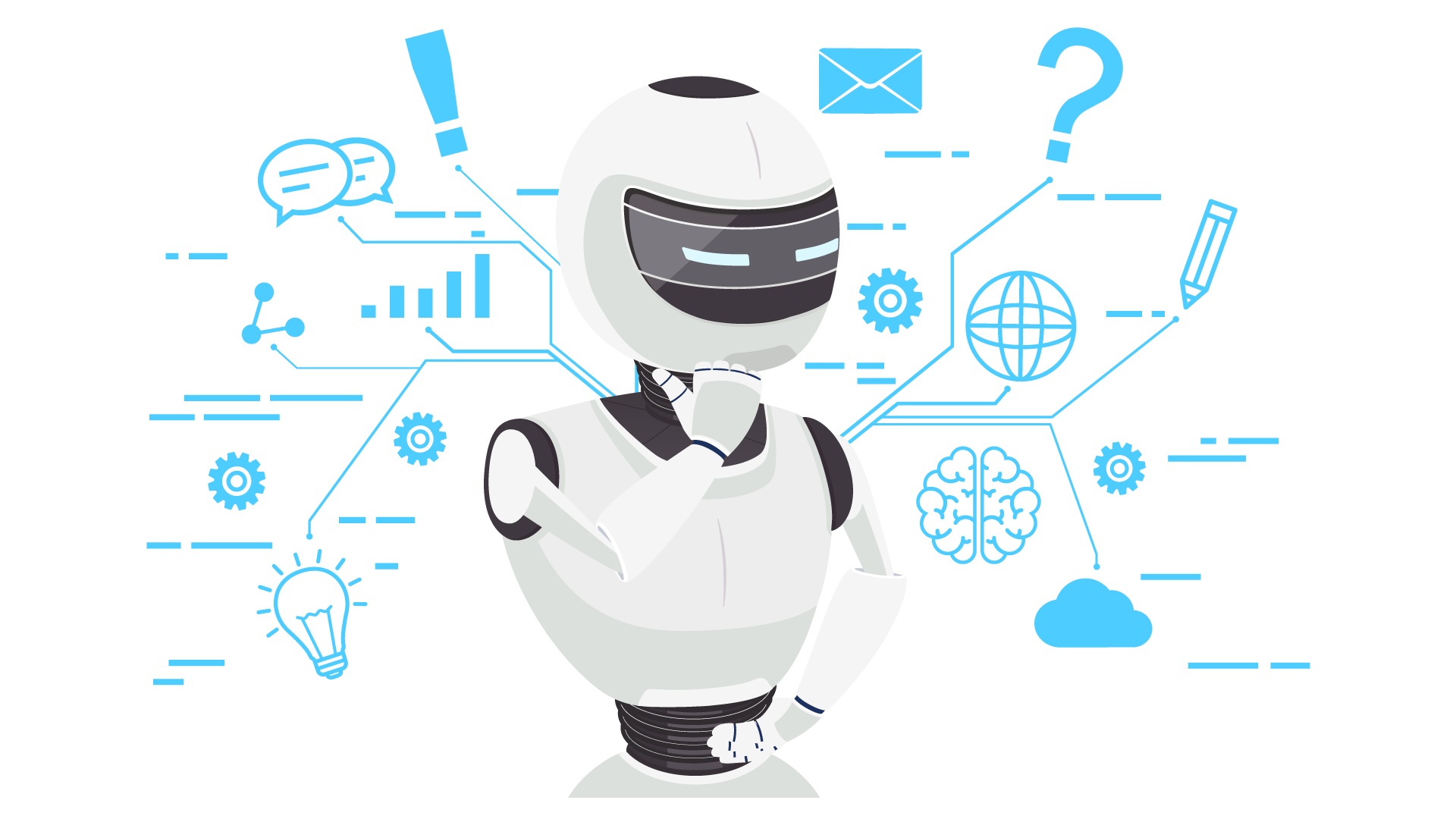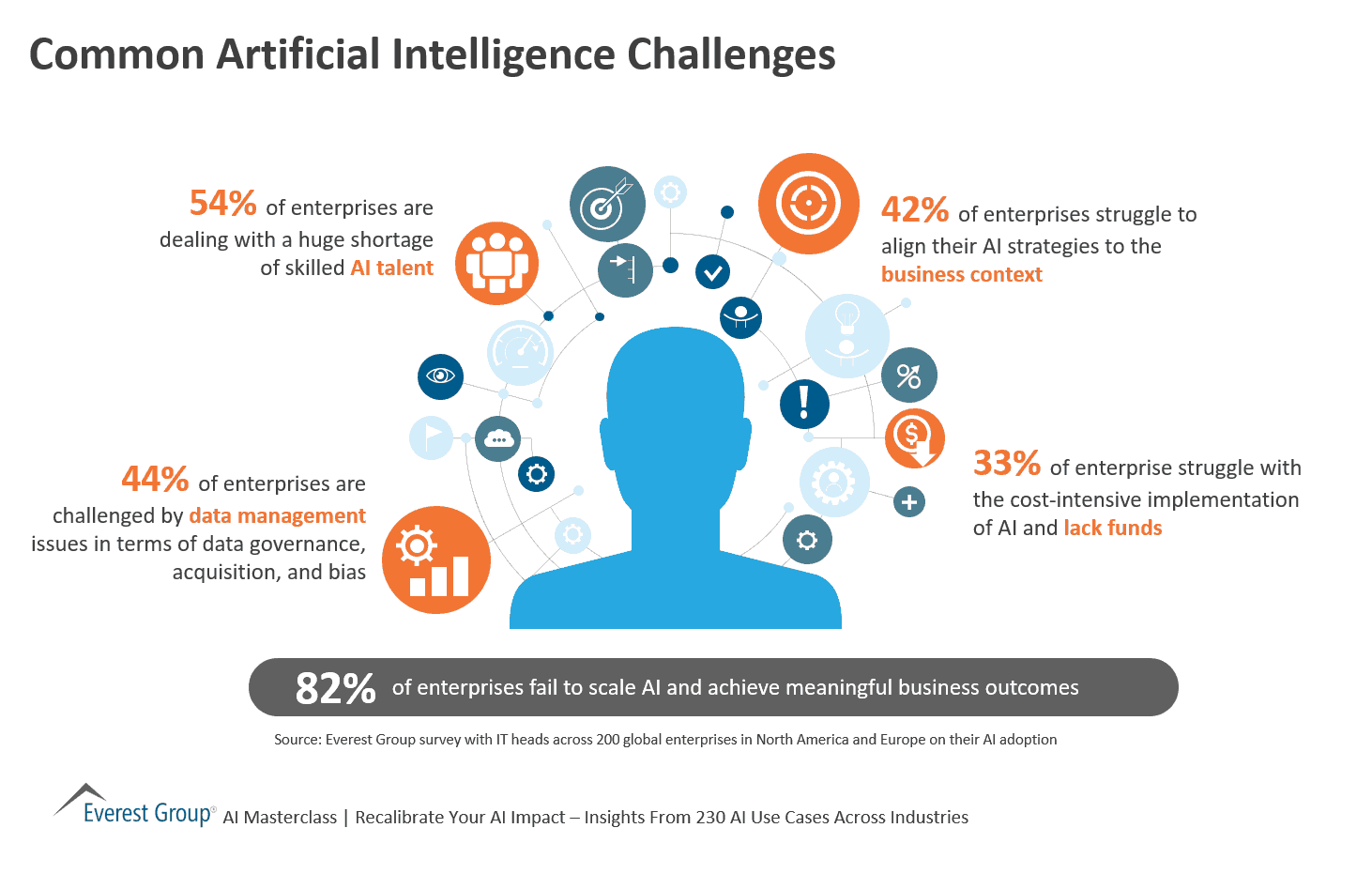How Artificial Intelligence Will Change The Future?
Artificial intelligence (AI) makes it possible for machines to learn from experience, adjust to new inputs and perform human-like tasks. Most AI examples that you hear about today – from chess-playing computers to self-driving cars – rely heavily on deep learning and natural language processing. Using these technologies, computers can be trained to accomplish specific tasks by processing large amounts of data and recognizing patterns in the data. Artificial intelligence (AI) is wide-ranging branch of computer science concerned with building smart machines capable of performing tasks that typically require human intelligence. AI is an interdisciplinary science with multiple approaches, but advancements in machine learning and deep learning are creating a paradigm shift in virtually every sector of the tech industry.

Artificial intelligence generally falls under two broad categories:
Narrow AI: Sometimes referred to as "Weak AI," this kind of artificial intelligence operates within a limited context and is a simulation of human intelligence. Narrow AI is often focused on performing a single task extremely well and while these machines may seem intelligent, they are operating under far more constraints and limitations than even the most basic human intelligence.
Artificial General Intelligence (AGI): AGI, sometimes referred to as "Strong AI,". AGI is a machine with general intelligence and, much like a human being, it can apply that intelligence to solve any problem.

Artificial intelligence generally falls under two broad categories:
Narrow AI: Sometimes referred to as "Weak AI," this kind of artificial intelligence operates within a limited context and is a simulation of human intelligence. Narrow AI is often focused on performing a single task extremely well and while these machines may seem intelligent, they are operating under far more constraints and limitations than even the most basic human intelligence.
Artificial General Intelligence (AGI): AGI, sometimes referred to as "Strong AI,". AGI is a machine with general intelligence and, much like a human being, it can apply that intelligence to solve any problem.
How does Artificial Intelligence work?
AI automates repetitive learning and discovery through data. But AI is different from hardware-driven, robotic automation. Instead of automating manual tasks, AI performs frequent, high-volume, computerized tasks reliably and without fatigue. For this type of automation, human inquiry is still essential to set up the system and ask the right questions.
AI adds intelligence to existing products. In most cases, AI will not be sold as an individual application. Rather, products you already use will be improved with AI capabilities, much like Siri was added as a feature to a new generation of Apple products. Automation, conversational platforms, bots and smart machines can be combined with large amounts of data to improve many technologies at home and in the workplace, from security intelligence to investment analysis.
AI adapts through progressive learning algorithms to let the data do the programming. AI finds structure and regularities in data so that the algorithm acquires a skill: The algorithm becomes a classifier or a predictor. So, just as the algorithm can teach itself how to play chess, it can teach itself what product to recommend next online. And the models adapt when given new data. Back propagation is an AI technique that allows the model to adjust, through training and added data, when the first answer is not quite right.
AI analyzes more and deeper data using neural networks that have many hidden layers. Building a fraud detection system with five hidden layers was almost impossible a few years ago. All that has changed with incredible computer power and big data. You need lots of data to train deep learning models because they learn directly from the data. The more data you can feed them, the more accurate they become.
AI achieves incredible accuracy through deep neural networks – which was previously impossible. For example, your interactions with Alexa, Google Search and Google Photos are all based on deep learning – and they keep getting more accurate the more we use them. In the medical field, AI techniques from deep learning, image classification and object recognition can now be used to find cancer on MRIs with the same accuracy as highly trained radiologists.
AI gets the most out of data. When algorithms are self-learning, the data itself can become intellectual property. The answers are in the data; you just have to apply AI to get them out. Since the role of the data is now more important than ever before, it can create a competitive advantage. If you have the best data in a competitive industry, even if everyone is applying similar techniques, the best data will win.

How is Artificial Intelligence useful?
AI automates repetitive learning and discovery through data. But AI is different from hardware-driven, robotic automation. Instead of automating manual tasks, AI performs frequent, high-volume, computerized tasks reliably and without fatigue. For this type of automation, human inquiry is still essential to set up the system and ask the right questions.
AI adds intelligence to existing products. In most cases, AI will not be sold as an individual application. Rather, products you already use will be improved with AI capabilities, much like Siri was added as a feature to a new generation of Apple products. Automation, conversational platforms, bots and smart machines can be combined with large amounts of data to improve many technologies at home and in the workplace, from security intelligence to investment analysis.
AI adapts through progressive learning algorithms to let the data do the programming. AI finds structure and regularities in data so that the algorithm acquires a skill: The algorithm becomes a classifier or a predictor. So, just as the algorithm can teach itself how to play chess, it can teach itself what product to recommend next online. And the models adapt when given new data. Back propagation is an AI technique that allows the model to adjust, through training and added data, when the first answer is not quite right.
AI analyzes more and deeper data using neural networks that have many hidden layers. Building a fraud detection system with five hidden layers was almost impossible a few years ago. All that has changed with incredible computer power and big data. You need lots of data to train deep learning models because they learn directly from the data. The more data you can feed them, the more accurate they become.
AI achieves incredible accuracy through deep neural networks – which was previously impossible. For example, your interactions with Alexa, Google Search and Google Photos are all based on deep learning – and they keep getting more accurate the more we use them. In the medical field, AI techniques from deep learning, image classification and object recognition can now be used to find cancer on MRIs with the same accuracy as highly trained radiologists.
AI gets the most out of data. When algorithms are self-learning, the data itself can become intellectual property. The answers are in the data; you just have to apply AI to get them out. Since the role of the data is now more important than ever before, it can create a competitive advantage. If you have the best data in a competitive industry, even if everyone is applying similar techniques, the best data will win.

How is Artificial Intelligence useful?
Bring analytics to industries and domains where it’s currently underutilized.
Improve the performance of existing analytic technologies, like computer vision and time series analysis.
Break down economic barriers, including language and translation barriers.
Augment existing abilities and make us better at what we do.
Give us better vision, better understanding, better memory and much more.
Artificial intelligence is not here to replace us. It augments our abilities and makes us better at what we do. Because AI algorithms learn differently than humans, they look at things differently. They can see relationships and patterns that escape us. This human, AI partnership offers many opportunities.

Benefits of AI Applications in Future Workspaces
The foremost use of AI applications is in managing data and reshaping the existing resource to build future strategies. Some of the focus areas are:
Creating a satisfactory employee experience
Adopting an Agile Approach to Recruit and Develop Employees
Create workspaces to promote a healthy environment
Taking help in developing a positive response of customers for your business
Using for team development and not just individual development
AI applications are the next buzz in the field of IT sector. Many software companies are exclusively working on developing AI applications. Despite the high cost of the AI services, most of the companies like to reshape their workspace with AI

What are the challenges of using Artificial Intelligence?
Artificial intelligence is going to change every industry, but we have to understand its limits. The principle limitation of AI is that it learns from the data. There is no other way in which knowledge can be incorporated. That means any inaccuracies in the data will be reflected in the results. And any additional layers of prediction or analysis have to be added separately. Today’s AI systems are trained to do a clearly defined task .The system that detects fraud cannot drive a car or give you legal advice. In fact, an AI system that detects health care fraud cannot accurately detect tax fraud or warranty claims fraud. In other words, these systems are very, very specialized. They are focused on a single task and are far from behaving like humans. Likewise, self-learning systems are not autonomous systems. But computers that can probe complex data to learn and perfect specific tasks are becoming quite common.

It’s the time for the organizations to get excited about getting your company tuned with bots and robots .The emerging organizations must wholeheartedly accept the changes for better workspaces. Artificial intelligence as Service help organizations to determine their strengths and weaknesses to get ready to adopt the AI revolution. the services can easily integrate with your existing system. You can approach leading AI development and machine learning service companies anytime an It’s the time for the organizations to get excited about getting your company tuned with bots and robots. The emerging organizations must wholeheartedly accept the changes for better workspaces. Artificial intelligence as Service help organizations to determine their strengths and weaknesses to get ready to adopt the AI revolution. the services can easily integrate with your existing system. You can approach leading AI development and machine learning make sure your company rises to success with AI.
Break down economic barriers, including language and translation barriers.
Augment existing abilities and make us better at what we do.
Give us better vision, better understanding, better memory and much more.
Artificial intelligence is not here to replace us. It augments our abilities and makes us better at what we do. Because AI algorithms learn differently than humans, they look at things differently. They can see relationships and patterns that escape us. This human, AI partnership offers many opportunities.

Benefits of AI Applications in Future Workspaces
The foremost use of AI applications is in managing data and reshaping the existing resource to build future strategies. Some of the focus areas are:
Creating a satisfactory employee experience
Adopting an Agile Approach to Recruit and Develop Employees
Create workspaces to promote a healthy environment
Taking help in developing a positive response of customers for your business
Using for team development and not just individual development
AI applications are the next buzz in the field of IT sector. Many software companies are exclusively working on developing AI applications. Despite the high cost of the AI services, most of the companies like to reshape their workspace with AI

What are the challenges of using Artificial Intelligence?
Artificial intelligence is going to change every industry, but we have to understand its limits. The principle limitation of AI is that it learns from the data. There is no other way in which knowledge can be incorporated. That means any inaccuracies in the data will be reflected in the results. And any additional layers of prediction or analysis have to be added separately. Today’s AI systems are trained to do a clearly defined task .The system that detects fraud cannot drive a car or give you legal advice. In fact, an AI system that detects health care fraud cannot accurately detect tax fraud or warranty claims fraud. In other words, these systems are very, very specialized. They are focused on a single task and are far from behaving like humans. Likewise, self-learning systems are not autonomous systems. But computers that can probe complex data to learn and perfect specific tasks are becoming quite common.

It’s the time for the organizations to get excited about getting your company tuned with bots and robots .The emerging organizations must wholeheartedly accept the changes for better workspaces. Artificial intelligence as Service help organizations to determine their strengths and weaknesses to get ready to adopt the AI revolution. the services can easily integrate with your existing system. You can approach leading AI development and machine learning service companies anytime an It’s the time for the organizations to get excited about getting your company tuned with bots and robots. The emerging organizations must wholeheartedly accept the changes for better workspaces. Artificial intelligence as Service help organizations to determine their strengths and weaknesses to get ready to adopt the AI revolution. the services can easily integrate with your existing system. You can approach leading AI development and machine learning make sure your company rises to success with AI.
Comments
Post a Comment